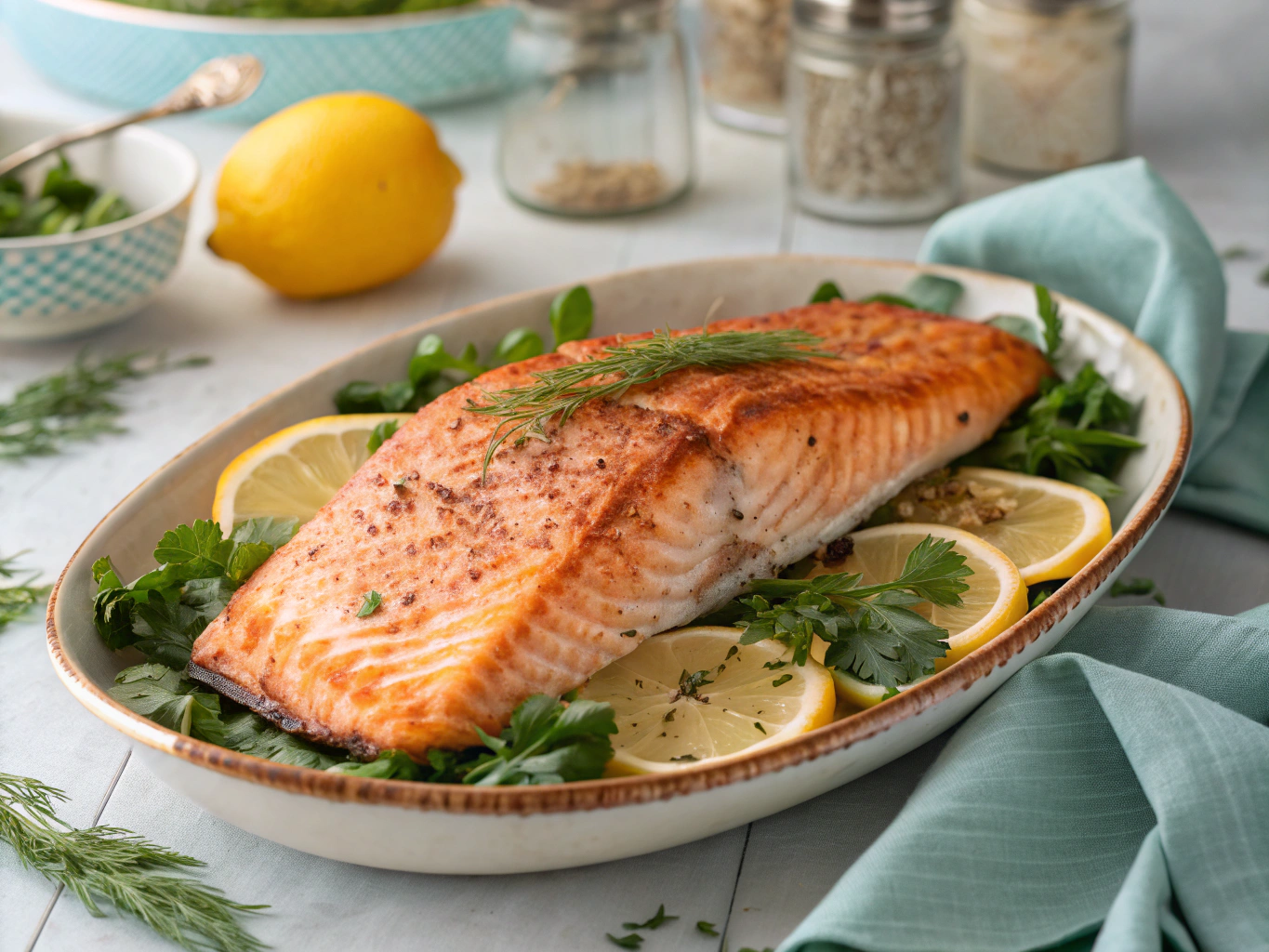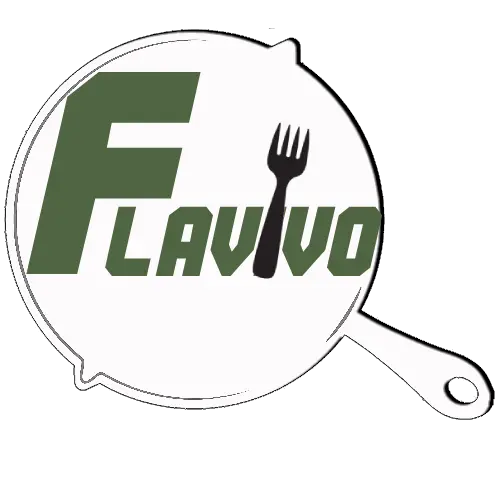
If there’s one recipe that’s saved my kitchen on busy weeknights and still managed to impress dinner guests, it’s baked salmon. In this article, you’ll discover how to make ultra-flavorful baked salmon that’s crispy on the outside, tender on the inside, and packed with heart-warming comfort. You’ll also get tips on timing, ingredients, and methods tailored to everyday kitchen setups. Whether you’re new to fish or a salmon veteran, this is your no-fake-flavor guide to baking success—just like Grandma would’ve wanted, but modernized with a little MacMar twist.
My Charleston Kitchen Roots & Why Baked Salmon Matters
From Grandma’s Stove to Salmon Supper
I still remember the first time I baked a piece of salmon. I was 14 and insistent that I could recreate a meal I’d watched on a cooking show. My grandma stood back, skeptical, but to her credit—she let me fly solo. The result? Overdone on one end, raw on the other. But she didn’t scold me. Instead, she said, “Well, we learned something. Now let’s fix it.” That shaped the way I approach food—curiously, fearlessly, always open to tweaking tradition.
These days, I see baked salmon as one of those beautifully forgiving dishes. Unlike pan-searing or grilling, baking salmon lets the heat develop evenly, gently coaxing all the flavor without overwhelming it. At FlavivoRecipes, we like recipes that make you feel like a seasoned home cook—even when you’re still figuring out timing and texture. Baked salmon fits that motto like an oven mitt.
You don’t need rare ingredients or cookware. This recipe works whether you’re using wild-caught sockeye or the frozen fillets you picked up last-minute at Trader Joe’s. Plus, salmon plays well with just about anything — spices, sauces, citrus, you name it. It’s a culinary canvas anyone can paint on.
Bake it at 400°F for caramelized edges and a tender interior, or adjust slightly as needed—I’ll walk you through it. Along the way, I’ll sprinkle in some hard-earned lessons and techniques I picked up through catering at local Charleston potlucks and running a food truck on Meeting Street. Let’s make comfort food memorable—and bold.
Why Baked Salmon is a Brilliant Choice
When it comes to meals that offer nutrition, ease, and elegance all in one, baked salmon checks every box. Packed with omega-3s, protein, and flavor that deepens in the oven, it’s also easily paired with just about anything. Broccoli? Sure. Creamy grits? Even better. Quinoa with citrus zest? Now we’re talking.
Beyond health benefits, baked salmon wins from a practical perspective. It doesn’t splatter like stovetop searing or require your constant attention. It slides into the oven and emerges juicy and golden in under 20 minutes. That makes it perfect for weeknight crunches, weekend entertaining, or meal prepping ahead.
If you’re looking to branch out, you can explore the rich local dishes I pair with it, like my collard greens pesto or an earthy black-eyed pea side, inspired by Charleston farmer’s markets. Baked salmon adapts—just like anyone who’s ever tried to please picky eaters and adventurous guests on the same night.
Making the Perfect Baked Salmon at Home
Ingredients List
Here’s what you need for a balanced, flavorful baked salmon that comes together in less than 30 minutes. Even if you’re not a “fish person,” this one’s worth a try.
| Ingredient | Substitutions |
|---|---|
| 4 salmon fillets (6 oz each), skin-on or skinless | Steelhead trout or Arctic char |
| 2 tbsp olive oil | Avocado oil or melted butter |
| Salt and black pepper to taste | Sea salt, pink Himalayan, or garlic salt |
| 1 lemon, thinly sliced | Lime or orange zest |
| 1 tsp paprika or smoked paprika | Old Bay seasoning or Cajun spice blend |
| Fresh dill or parsley for garnish | Basil, cilantro, or thyme |
Timing & Temperature Tips
- Prep time: 10 minutes
- Cook time: 12–15 minutes
- Total time: 25 minutes
The sweet spot for baked salmon is between 12–15 minutes in a preheated oven at 400°F. If you’re new to fish, remember that salmon continues cooking even after it’s out of the oven. Aim for an internal temp of 125°F–130°F for medium doneness, and let it rest for 2–3 minutes.
Baking at 400°F allows the fatty oils to crisp up the edges without drying out the center. Baking at 350°F takes a bit longer, but yields an equally moist interior—ideal if you’re prepping family-style casseroles alongside it.
Step-by-Step Instructions for Foolproof Flavor
- Preheat your oven to 400°F and line a baking sheet with parchment paper or foil.
- Pat salmon fillets dry using paper towels. Dry fish sears better and holds seasoning evenly.
- Place fillets skin-side down (if using skin-on) and brush with olive oil. Use enough to coat but not drown.
- Season generously with salt, pepper, and paprika. Top with lemon slices—they deepen flavor and prevent sticking.
- Bake uncovered for 12–15 minutes, depending on thickness. Most 1-inch fillets bake in 13 minutes.
- Remove from oven and rest 2 minutes. Garnish with fresh herbs and serve while warm.
Need a side idea? I love pairing this with my crispy roasted butter beans or creamy sweet potato mash.
Flavor Amplifiers and Variations for Baked Salmon
Spice Mixes That Shine
Salmon loves boldness. You can go classic with lemon-garlic and dill, or get adventurous with smoked chipotle rubs or miso glazes. For DIY spice blends, combine:
- 1 tsp chili powder
- ½ tsp ground cumin
- Pinch of cinnamon
- ½ tsp brown sugar
- Salt to taste
Rub it over the fish right before baking for a southwestern twist. For a more Mediterranean profile, try za’atar or harissa paste. Seasonings don’t need to be fancy—just thoughtfully layered.
Fun tip: If you’re getting herbs from your garden or a farmers’ market like the ones I shop in Charleston, you’ll discover how much fresher the results can taste. For more tips on herb uses in dishes, check out this resource on herb safety and nutrition from the National Institutes of Health.
Citrus, Sauce & Garnish Ideas
For something different, whisk together 1 tablespoon soy sauce, 1 teaspoon maple syrup, ½ teaspoon sesame oil, and fresh grated ginger. Brush this over the salmon before baking for an Asian-inspired glaze. Serve with steamed bok choy and rice for a weeknight winner.
Lemon-infused olive oils and flavored butters are fantastic as finishing touches, especially when paired with garlic confit or a crunchy, herby topping. Fresh herbs always wake up the fish after baking—dill, basil, tarragon, even mint in the summer.
And if you want a decadently creamy option, try a swirl of Greek yogurt mixed with Dijon mustard, garlic, and lemon zest. It’s a dream.
Serving Suggestions, Storage & Final Flavor Boosters
What to Serve with Baked Salmon
Pairing is part of the magic. Baked salmon is versatile enough to work with light fare or heavier comfort classics.
Here are a few pairings I swear by:
| Light Pairings | Comfort Pairings |
|---|---|
| Steamed asparagus | Creamy mashed potatoes |
| Couscous with herbs | Cheddar grits |
| Mixed leafy greens | Rosemary garlic bread |
Also consider adding a spoon of my tangy pickled veggies on the side to keep your palate refreshed between bites.
How to Store Leftovers
Baked salmon stores beautifully:
- Refrigerate in airtight container: 3–4 days
- To reheat, bake at 275°F for 10 minutes—preventing it from drying out
- Freeze up to 2 months in tightly wrapped foil, then use in chowders or tacos for bonus meals
If the salmon was seasoned but not glazed with liquids, it holds better after freezing and won’t turn mushy.
FAQs About Cooking Salmon in the Oven
Is it best to cook salmon at 350 or 400?
Both temperatures work—350°F gives slower, gentler cooking for very thick fillets or extra tender results; 400°F adds caramelization and cooks faster. I personally use 400°F most often for that golden top crust.
How long does it take for salmon to cook at 400 degrees?
At 400°F, salmon generally cooks in 12–15 minutes depending on thickness. A 1-inch fillet takes about 13 minutes to reach medium doneness.
How long should you cook the salmon in the oven?
12–15 minutes at 400°F or 15–18 minutes at 350°F. Use a thermometer to hit 125°F for medium doneness, then rest the salmon before serving.
Should I cover my salmon while baking in the oven?
You don’t need to. Baking uncovered allows the surface to crisp up and caramelize, especially with lemon slices or herb toppings. Only cover if you’re cooking vegetables alongside in the same dish.
Conclusion
Baked salmon isn’t just food—it’s comfort, color, and quick confidence. Whether you’re entertaining or cooking solo, it delivers easy wins with bold flavor. I hope this guide helps make your next meal exciting and simple, with salmon that’s moist, golden, and full of heart.
